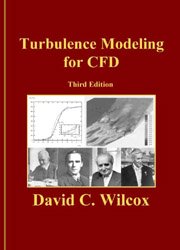Turbulence modeling for CFD pdf download
Par tanner veronica le samedi, décembre 5 2015, 21:30 - Lien permanent
Turbulence modeling for CFD by David C. Wilcox


Turbulence modeling for CFD David C. Wilcox ebook
Page: 477
Publisher: DCW Industries
Format: pdf
ISBN: 0963605100, 9780963605108
The prediction from the Smagorinsky model in the Neptune CFD code and the one-equation model of CFX-4 was compared with the measurement data of Deen et al. Article: Wang YJ and Zhang KM (2012). Nonlinear Dynamics And Chaos by Strogatz. Classical Mechanics by Goldstein. Turbulence models are necessary because we cannot afford big enough computers to directly capture every scale of motion. CTAG's transport model is referred to as CFD-VIT-RIT. Advanced CFD and Turbulence Modelling for Mixing Problems (PhD Position) Closing Date: 31 March 2011. Turbulence Modeling for CFD (Comp. Most of the dispersed flow models are two subgrid-scale models (as in Figure 9). A Climate Modelling Primer by Kendal McGuffie. However, the numerics and turbulence models contained within most commercial CFD packages are able to replicate this to a high degree of accuracy. Cavitations modeling; development of precondition algorithms; development of turbulence models with CFD software. Affects are considered concurrently. Back in the day much talk was had about turbulence modelling, convective discretisation schemes and linear equation solvers, all typical CFD subjects but somewhat out of place in the [. The description of bubbly flows involves modelling of a deformable (gas-liquid) interface separating the phases; discontinuities of properties across the phase interface; the exchange between the phase; and turbulence modelling. Coupled turbulence and aerosol dynamics modeling of vehicle exhaust plumes using the CTAG model.
ZBrush Digital Sculpting Human Anatomy ebook download